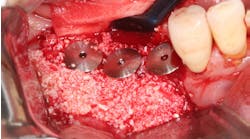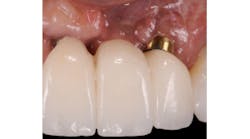Infection control for dental offices: Ongoing research into combatting MRSA
Kathleen Dannelly, an Indiana State University associate professor of biology leading the recent study about community-associated MRSA (methicillin-resistant Staphylococcus aureus), says the toxin killed more people in the United States last year than AIDS ... and "it's going to get worse."
RELATED INFORMATION ABOUT MRSA ...
A killer among us: deadly CRE bacteria
MRSA and dentures
Hand sanitizers, antiseptic products carry unproven claims that they prevent MRSA infections
Old-fashioned weapons against MRSA may be best
MRSA
MRSA identifies a staph infection that is unable to be defeated by most penicillin-based drugs. Community-associated MRSA varies from the hospital-related one, which tends to be a more virulent strain picked up by people admitted to hospitals. Community-associated MRSA can cause toxic shock syndrome or blood and bone infections.
According to Dannelly, "Many people unknowingly carry MRSA on their skin as part of their bacteria and remain uninfected as long as they receive no cuts or scrapes to allow the bacteria to enter the body."
The Caenorhabditis elegans, a small worm called a nematode, that scurried across a Petri dish has helped lead to discoveries about community-associated MRSA. By comparing the genomes of community-associated MRSA and the staph infection, researchers found significant differences to investigate.
Read the entire article from ScienceDaily.






